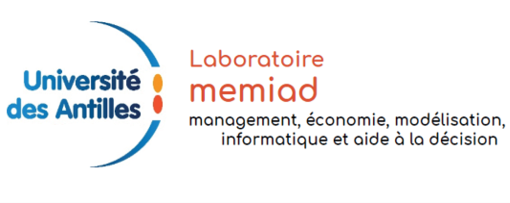|
The Family Business: An Organizational Model in a Context of Crises and Transitions?
Argumentaire Reason or Emotion in Organizations? Reason and Emotion in Organizations! This is what family businesses demonstrate: reason and emotion can coexist in organizations… sometimes opposing each other, certainly, but also complementing each other and creating synergies. These hybrid organizations indeed follow a dual logic: that of economic rationality, reflected in the maximization of financial wealth, and that of emotion, involving the pursuit of emotional, social, and environmental objectives. These organizations constitute the majority of the economic fabric in France and around the world. Primarily small and medium-sized, they represent 83% of businesses in France, according to the Institut Montaigne. Half of publicly listed large companies and 70% of medium-sized businesses (Entreprises de Taille Intermédiaire, ETIs) are family businesses. A family business is one where one or more families exert significant influence: whether as shareholders or, more generally, through involvement in operations, management, leadership, and governance. Their influence on organizational culture and values is also decisive. The family business is a mission-driven organization. It has a purpose: essentially, longevity and social impact. Global crises—be they health, economic, social, or geopolitical—test the resilience and adaptability of organizations. Family businesses, with their unique characteristics, offer an organizational model that can inspire other types of organizations to navigate periods of turbulence and transition more effectively. This conference aims to explore how the management, leadership, and governance principles of family businesses can be applied to strengthen the resilience and sustainability of organizations, whether commercial, nonprofit, cooperative, or non-governmental. Family businesses adopt a long-term perspective that drives them to prioritize sustainability over short-term gains (Miller & Le Breton-Miller, 2005). They also tend to take a more cautious approach to risk management, favoring diversification and capital preservation (Naldi et al., 2007). This prudence allows them to create crucial financial buffers during economic crises. For instance, many family businesses maintain cash reserves and avoid high debt levels, enabling them to withstand economic shocks. Their long-term vision also translates into investments in sustainable and responsible practices that can enhance their resilience to economic and environmental crises. Indeed, they are more likely to invest in green initiatives and sustainable resource management practices (Zellweger & Sieger, 2012; De Massis et al., 2015). Family businesses are also more flexible and agile due to their typically centralized governance structure. This flexibility enables rapid responses to the multifaceted crises that organizations face in an ever-changing environment (Sirmon & Hitt, 2003). For example, during the COVID-19 pandemic, many family businesses quickly pivoted to new business models, such as producing medical equipment or implementing home delivery services. Deeply rooted in their local communities, family businesses also play an active role in supporting community and social initiatives (Dyer & Whetten, 2006). During social and health crises, this community engagement has helped strengthen social cohesion and support community resilience efforts. Above all, family businesses are distinguished by the strong presence of emotional ties and shared values among family members involved in the business. These emotional dimensions, often perceived as subjective and difficult to quantify, play a crucial role in the resilience of these organizations. Emotional bonds within family businesses strengthen cohesion and commitment among family members and employees. This cohesion translates into increased solidarity and unity of action, which are essential during crises. According to Gómez-Mejía et al. (2007), the concept of "socio-emotional wealth" highlights the importance of non-financial benefits, such as family relationships and a sense of belonging, in family businesses. This strong emotional commitment can motivate members to make personal sacrifices to ensure the business’s survival and prosperity. The emotional factor is also evident in the high levels of employee engagement and loyalty, as they may feel like part of the family (Gómez-Mejía et al., 2007). This commitment is a critical factor in the organizational resilience of family businesses during crises, as the most dedicated employees are more likely to show flexibility and rally to support the company. Furthermore, because of their emotional ties, family businesses often develop effective conflict resolution mechanisms based on mutual respect and consensus-building (Harvey & Evans, 1994). These mechanisms minimize tensions and prevent internal divisions, thereby fostering more harmonious and unified decision-making. Of course, family businesses are not without flaws and must face unique challenges related to family dynamics, nepotism, succession, lack of professionalism, or power concentration. Close family relationships can sometimes lead to personal conflicts that affect the management of the business (Kellermanns & Eddleston, 2004). These conflicts stem from sibling rivalries, differences in strategic vision, or disagreements over control and direction. Family conflicts can harm internal harmony and impact the company’s performance and reputation. Additionally, some family businesses may lack professionalism, especially when managed informally (Chrisman, Chua, & Sharma, 2005). The absence of formal governance structures, clear policies, and role separation can lead to inefficiencies and biased decisions. Family favoritism may also hinder the hiring of external talent, limiting skills and innovation. The concentration of power and decision-making in the hands of a few family members can further restrict the diversity of perspectives and ideas (Schulze, Lubatkin, & Dino, 2003). This concentration may also result in resistance to change and the adoption of conservative strategies that overlook market opportunities. Love, hate, envy, regret… act as a pharmakon that permeates the life of the family business, its shareholders, employees, or potential successors. Both remedy and poison, these emotions can contribute to success, foster satisfaction, gratitude, the achievement of organizational objectives, or even individual and corporate resilience. At times, however, they may lead to excesses, dissatisfaction, misunderstandings, conflicts, or even family disputes that culminate in the sale or dismantling of the family business. Managing a family business means managing this paradox alongside many others. How can reason and emotion synergistically combine within a family business to ensure its sustainability? Would achieving such a balance not serve as a model for non-family businesses and other organizations? This conference invites theoretical, conceptual, and empirical contributions to examine if and how the family business model can address financial (over-indebtedness, insolvency, etc.), relational (internal conflicts, weak cohesion, etc.), human (disengagement, turnover, employee well-being, etc.), or strategic (growth, innovation, etc.) challenges faced by organizations during crises and transitions. Among other topics, contributions may address the following questions:
Special attention will be given to contributions focusing on the context of entrepreneurship and family businesses in the Caribbean and overseas regions. References Chrisman, J. J., Chua, J. H., & Sharma, P. (2005). Trends and directions in the development of a strategic management theory of the family firm. Entrepreneurship Theory and Practice, 29(5), 555-576. De Massis, A., Frattini, F., Pizzurno, E., et Cassia, L. (2015). Product innovation in family versus nonfamily firms: An exploratory analysis. Journal of Small Business Management, 53(1), 1-36. Dyer, W. G., et Whetten, D. A. (2006). Family firms and social responsibility: Preliminary evidence from the SetP 500. Entrepreneurship Theory and Practice, 30(6), 785-802. Gómez-Mejía, L. R., Haynes, K. T., Núñez-Nickel, M., Jacobson, K. J., & Moyano-Fuentes, J. (2007). Socioemotional wealth and business risks in family-controlled firms: Evidence from Spanish olive oil mills. Administrative Science Quarterly, 52(1), 106-137. Gómez-Mejía, L. R., Haynes, K. T., Núñez-Nickel, M., Jacobson, K. J., et Moyano-Fuentes, J. (2007). Socioemotional wealth and business risks in family-controlled firms: Evidence from Spanish olive oil mills. Administrative Science Quarterly, 52(1), 106-137. Harvey, M., & Evans, R. E. (1994). Family business and multiple levels of conflict. Family Business Review, 7(4), 331-348. Kellermanns, F. W., & Eddleston, K. A. (2004). Feuding families: When conflict does a family firm good. Entrepreneurship Theory and Practice, 28(3), 209-228. Miller, D., et Le Breton-Miller, I. (2005). Managing for the long run: Lessons in competitive advantage from great family businesses. Harvard Business Press. Naldi, L., Nordqvist, M., Sjöberg, K., et Wiklund, J. (2007). Entrepreneurial orientation, risk taking, and performance in family firms. Family Business Review, 20(1), 33-47. Schulze, W. S., Lubatkin, M. H., & Dino, R. N. (2003). Toward a theory of agency and altruism in family firms. Journal of Business Venturing, 18(4), 473-490. Sirmon, D. G., et Hitt, M. A. (2003). Managing resources: Linking unique resources, management, and wealth creation in family firms. Entrepreneurship Theory and Practice, 27(4), 339-358. Zellweger, T., et Sieger, P. (2012). Entrepreneurial orientation in long-lived family firms. Small Business Economics, 38, 67-84. |



